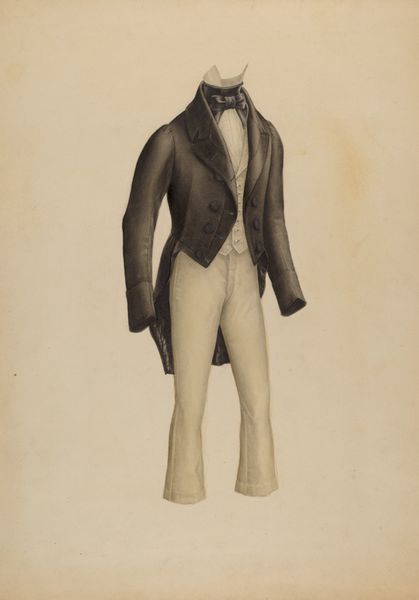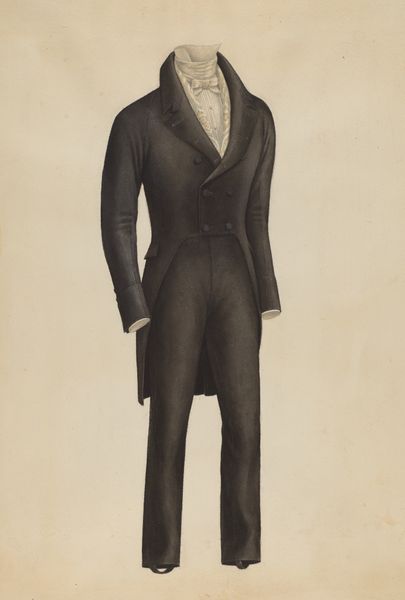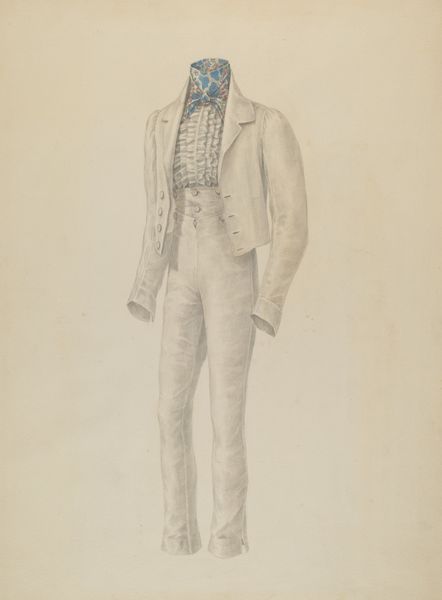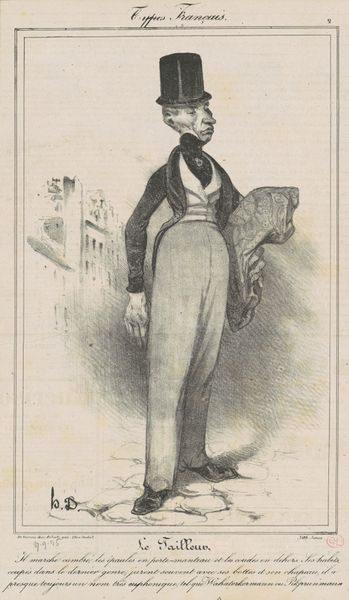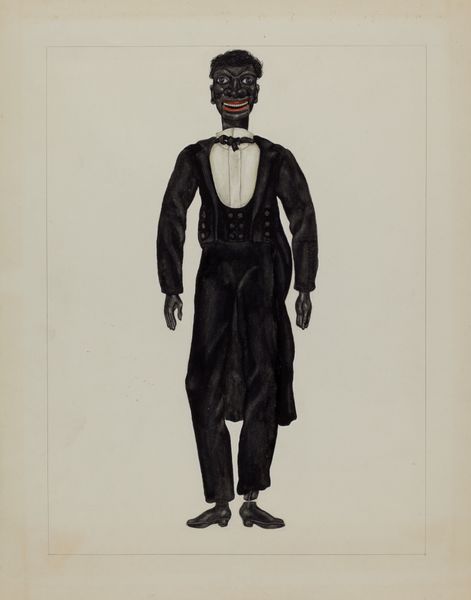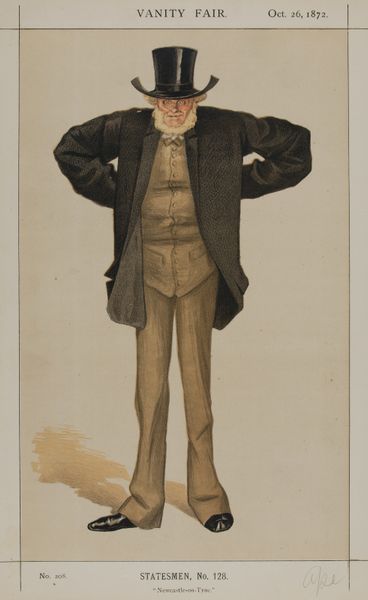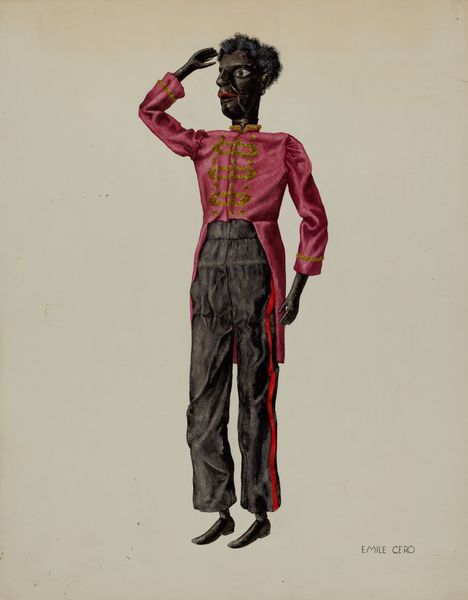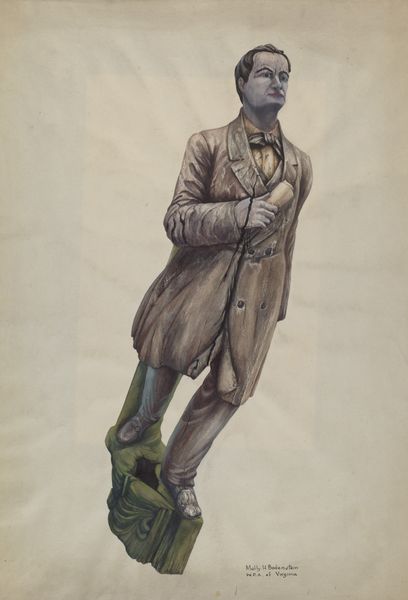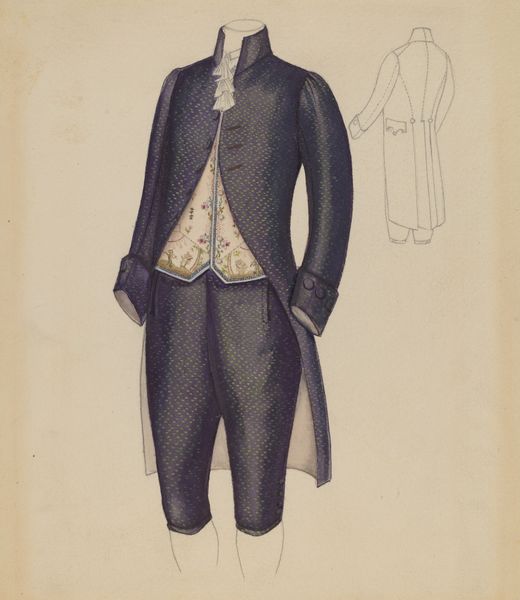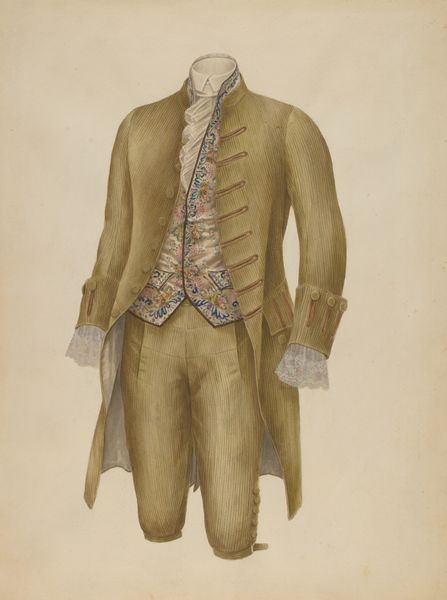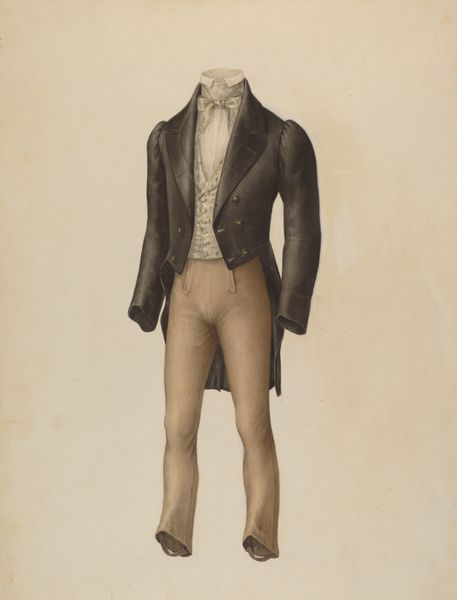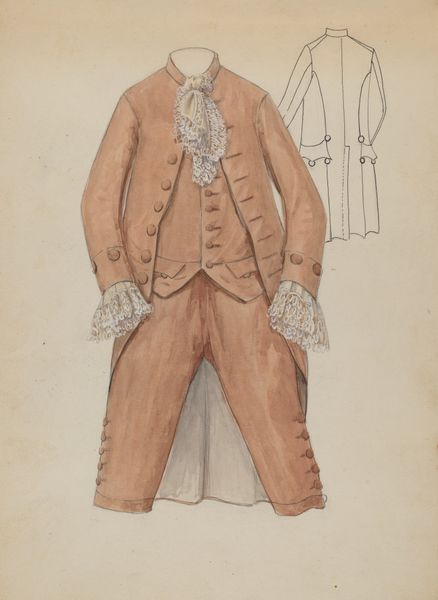
drawing, pencil, wood
#
portrait
#
drawing
#
charcoal drawing
#
folk-art
#
pencil
#
naïve-art
#
wood
Dimensions: overall: 38.2 x 27.9 cm (15 1/16 x 11 in.) Original IAD Object: 26 1/4" high
Copyright: National Gallery of Art: CC0 1.0
Curator: Up next, we have a piece entitled “Doll” created around 1937, from the artist Helen Bronson. It’s rendered in graphite pencil and charcoal. Editor: This doll figure is stiff, stoic. The charcoal adds a somber, almost haunting quality to the subject’s gaze, or lack thereof. The rigid vertical composition emphasizes the stillness. Curator: Precisely. Note the artist’s decision to position the doll frontally and fully. This invites a direct, though admittedly strange, confrontation with the figure. There is a clear tension between the artist's meticulousness, evidenced in the precise depiction of the garment details, and the inherent primitivism of the subject, what you could easily identify as naïvé art. Editor: It’s a style perfectly suited to the Great Depression period, don't you think? Such "folk-art," or rather works rendered in the folk-art style, provided an important and immediate cultural function for a poverty stricken population. Beyond just the nostalgic return to handmade goods, but to a sense of simpler times and social cohesion when faced with large scale global problems they had little or no impact on. Curator: The artist really embraced this tension by using, as I said before, careful lines of charcoal for details, but almost leaving certain areas of the doll flat. The wood of the face, for instance, has very little modulation which further reinforces that folksy style. Editor: I'm curious, the drawing to the left appears to be an unrealized sketch or perhaps another attempt at the full figure portrait. Why do you think she decided to keep the secondary study on the finished composition, as opposed to cropping it? Curator: Good eye! That supplementary profile does introduce a layer of visual and, perhaps, psychological complexity, no? It provides another angle from which we can observe this peculiar doll, this man... It almost reveals the underlying geometrical form of its composition. This technique, from an art historical lens, also positions this piece, to some extent, beyond mere naive presentation toward early Cubism. Editor: In this juxtaposition, we confront not only the physicality of the doll but also, potentially, its inner world or, more accurately, the absence of it. Food for thought, I suppose. Curator: It certainly gives you pause. Thank you.
Comments
No comments
Be the first to comment and join the conversation on the ultimate creative platform.
